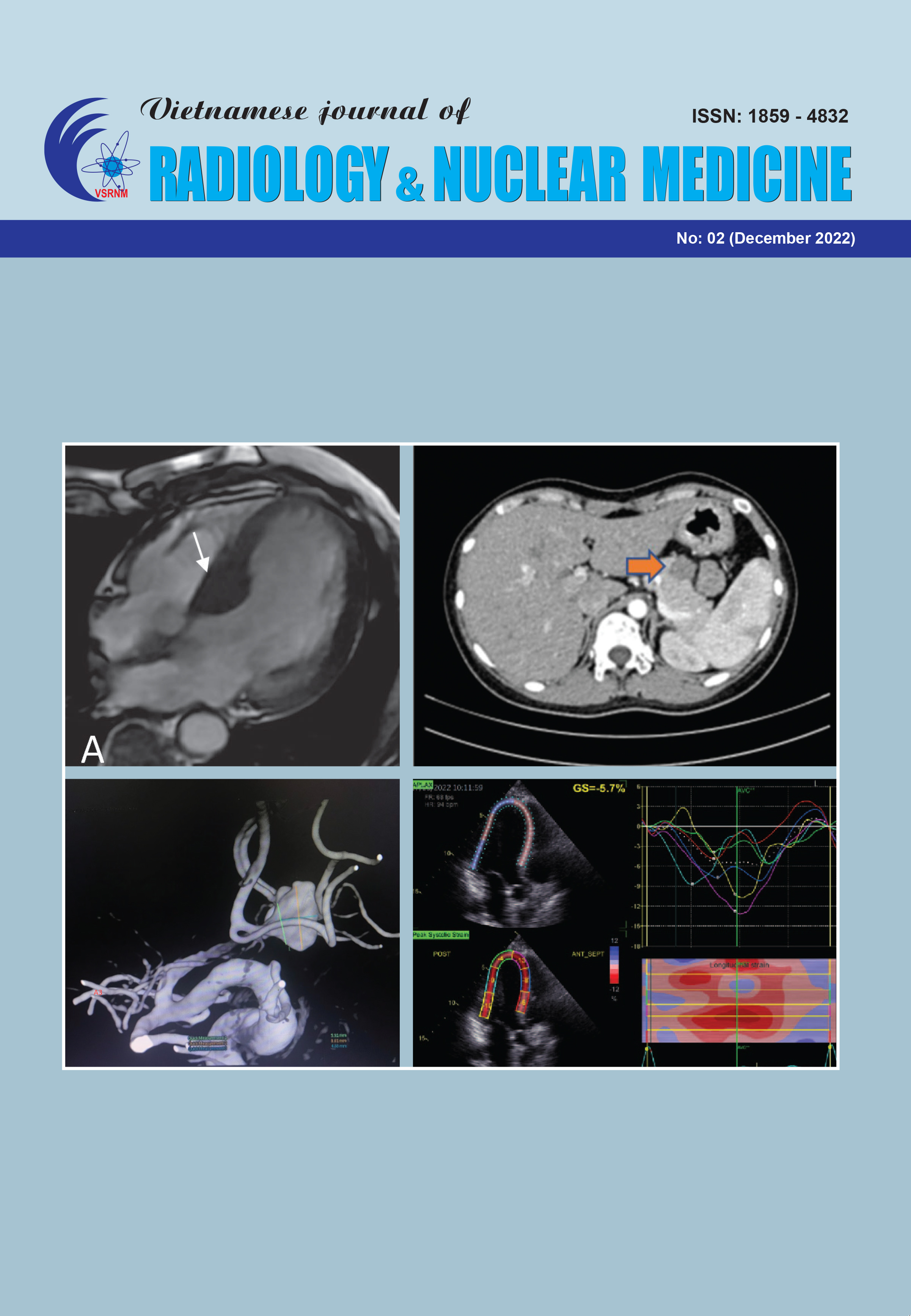CHARACTERIZATION OF CEREBRAL ANEURYSMS FOR ASSESSING RISK OF RUPTURE BY USING ANEURYSMS FLOW IN DSA
Tóm tắt
Calculating intra-aneurysm flow uses optical flow with computational fluid dynamics simulation on the numerical analysis. This is a new method to better understand the intravascular flow and aneurysm flow as well as factors related to the inflow vortex and the inflow jet which increase the rupture risk in patients with an aneurysm. It is essential to identify high-risk rupture sites for unruptured aneurysms and elucidate flow characteristics and flow morphology with ruptured aneurysms (RA). Therefore, we implement the study with two aims: 1, determine the hemodynamic factors and the flow rate inside the aneurysm, and 2, compare ruptured and unruptured aneurysms by flow measurement software ( Digital Subtraction Angiography (DSA)- AneurysmsFlow on 2-plane DSA machine at Bach Mai hospital.
Subjects and Method: A descriptive cross-sectional study was conducted between July 2021 and July 2022. There were a total of 127 patients with aneurysms who took DSA – AneurysmsFlow and received treatment at Bach Mai hospital.
Results: In 127 patients with 170 aneurysms, there were 139 aneurysms in a different locations which were calculated their flow by the AneurysmsFlow software in DSA at Bach Mai hospital. The flow model was affected mostly by the aneurysm wall, the most frequently seen was in the dome (64.8%), or body (29.1%). Only 15% of the aneurysm showed that the flow affected to aneurysm neck. According to the simple Cebral’s classification based on inflow and the formation of the vortex as well as the consistency of the vortex, type I (57.6%) is the most prevalent, next is type IV (19.4%), type II (12.2%), and the last one is the type III (10.8%). Simple consistent aneurysm models, large flow impingement regions, and large inflow jet size were usually seen at unruptured aneurysms. Conversely, rupture aneurysms were likely to have a vortex model, small flow impingement area, and small inflow jet size.
Conclusion: Flow calculation on DSA – Aneurysms Flow helps to understand better the dynamic of flow in the parent artery and aneurysm which help to consider early treatment in high-risk ruptured aneurysm as well are thoroughly understand the dynamic inside the ruptured aneurysm to have a right treatment plan.

